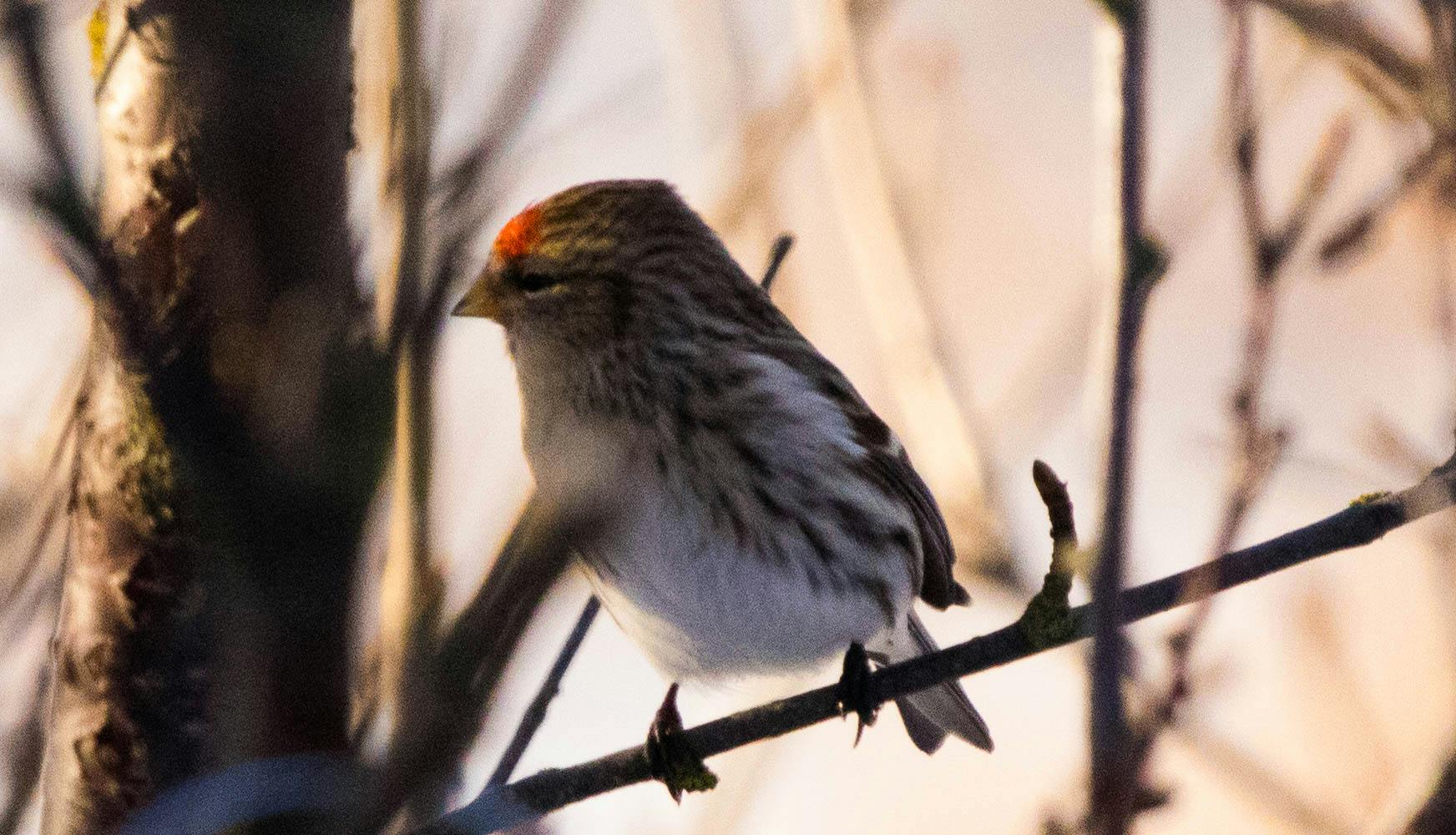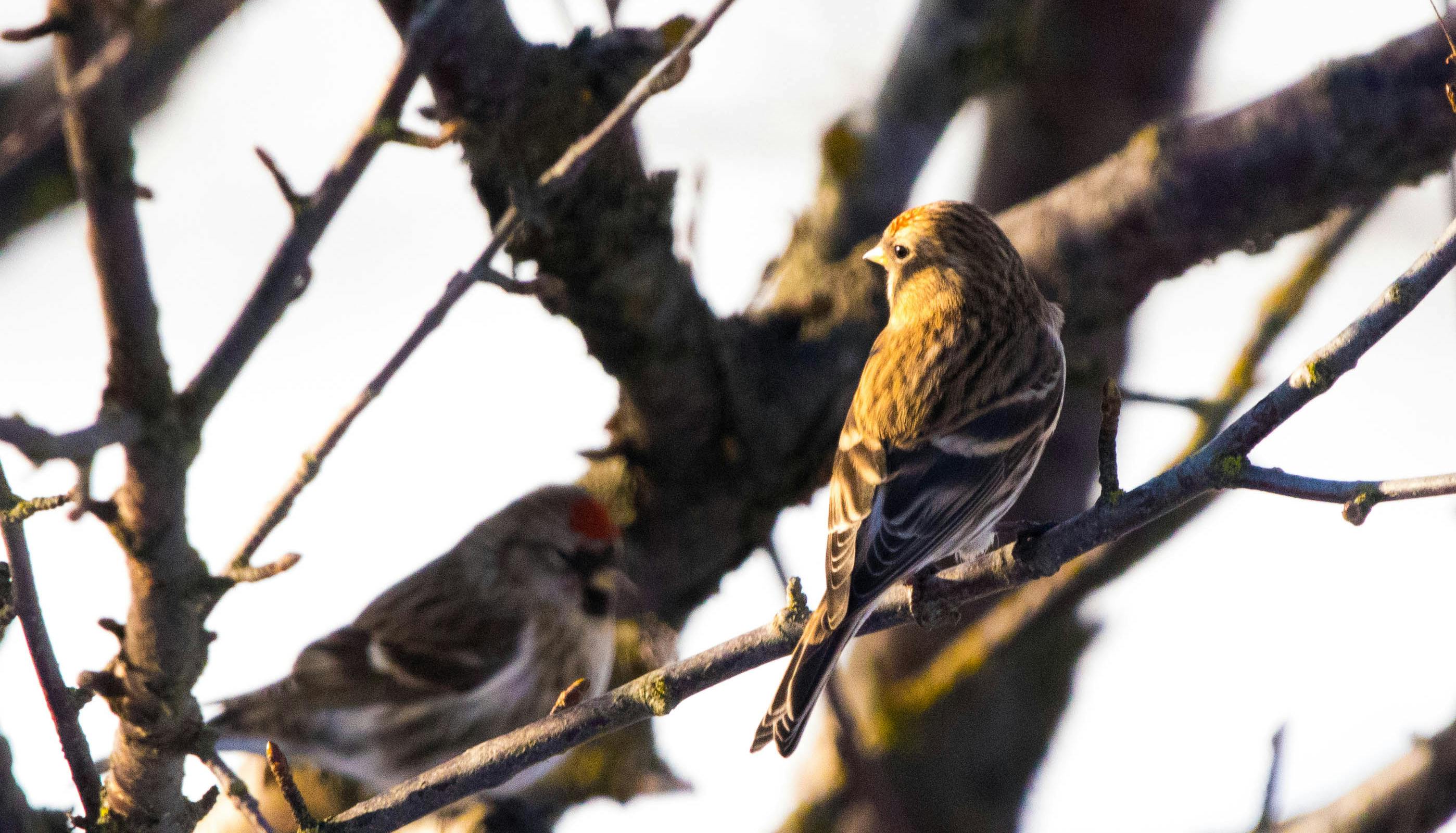
Discover the Elusive Beauty
Identifying the Icelandic Redpoll
The common redpoll (Acanthis flammea formerly known as Carduelis flammea) is a finch of the Fringillidae family and the only representative in Iceland. A few sub-species of redpolls are known in the world, but the Icelandic one, Acanthis flammea islandicus, is distinguished from redpolls that nest in South- Greenland (A. f. rostrata) and migrate through Iceland in spring and fall. The Arctic redpolls (Acanthis hornemann) from North Greenland are also seen in Iceland, but they are both larger and brighter coloured than other sub-species of redpolls.
Embark on a captivating journey to unravel the enchanting secrets of Icelandic nature and wildlife by immersing yourself in the rich offerings of the Perlan Museum in Reykjavík. Here, you will find interactive exhibits that invite you to delve deeply into every facet of Iceland's awe-inspiring wonders. This unique and immersive experience, carefully curated for visitors of all ages, consolidates Iceland's diverse beauty and ecological richness into a single, remarkable destination at the Perlan Museum. Learn more about Icelandic nature and wildlife here.
One of the smallest birds in Iceland

The redpoll is very delicate, weighing only 113 to 170 grams (0.4 to 0.6 oz) and was considered the lightest bird in Iceland until the goldcrest (Regulus regulus) established its settlement in 1999. The length of the redpoll is about 5 in, and the wingspan is 8-10 in, which is more than the wingspan of the Eurasian wren (Troglodytes troglodytes), which is though heavier than the redpoll. The redpolls are stationary in Iceland, and good fliers roam the country during winter in a wavelike flying motion.
There is a characteristic red spot on the bird's forehead, but the beak is yellow, surrounded by black feathers. Otherwise, the bird is greyish-brown with streaks on its rump but lighter coloured on its belly. The tail has a V-shaped look, but the colour of the individuals can differ considerably. In spring, the breasts of the males are suffused with pink, but otherwise, the sexes look alike.
Distribution and Ecology
Icelandic redpolls are found dispersed all around the country, following the distribution of birch forests, as the birch seed is their most important food item during the winter. These are lowland birds, as birch is not common in highlands. The main food is all sorts of insects during summer, but in winter, spruce lice, birch seeds and seeds distributed by bird lovers in their backyards. Sunflower seeds are their favourite but they can break all kinds of seeds with their specialised finch beak.
Courtship and Nesting

Redpolls are social when they are not nesting and travel in small flocks. The courtship starts in March, and the birds become vivid and lively. During this period there is a lot of jumping and dancing between branches, chasing and singing. Redpolls pair one year at a time, and the relationship is loyal. In spring, the male secures a territory that he publicises with a beautiful song.
The nest of the redpoll is a straw basket most often in the branches of birch or Sitka spruce (Picea sitchensis), insulated with wool or feathers. The first birds start nesting at the beginning of April in good seasons, but most nest at the end of May. The eggs are 4-8 bluish-coloured and incubated for 10-14 days by the female, but the male feeds his loved one during that period. Both parents care for the young, which start flying at about two weeks old.
Population Size Fluctuates
In a good season, the redpoll can hatch 2 to 3 clutches during the summer. The population size can, therefore, fluctuate greatly between years, and the recruitment is high. Recently, it was estimated that 31 thousand breeding pairs were found in Iceland, but older estimations were between 10-30 thousand.
Five Fun Facts about the Icelandic Red Poll
- In Iceland, the common redpoll is also called „red spot“ and „the cuckoo of happiness“.
- In Iceland, it has often been linked that a person who is favoured by the redpoll and other small birds is deemed to have happiness and a good destiny.
- Abroad, it has been shown that redpolls can perform tasks, like corvids, to attain food. They also shake branches to get seeds falling to the ground so it becomes easier for them to feed. A Lot of thinking in a small head!
- The oldest known redpoll, 7 years and 10 months old, was marked in Alaska. Most redpolls do not become older than 5 years.
- In a blizzard, redpolls sometimes dig a tunnel in the snow to make a shelter.
Popular articles

Reykjanes Volcanoes Overview
Enjoy a complete overview of the Reykjanes Volcanoes from 2021-2024. Learn about its geology, recent activity, and visitor tips for a safe, memorable experience.

Reykjanes Peninsula Volcanoes: Sundhnúksgígar Eruptions
The anticipated volcano has erupted in the Reykjanes Peninsula, the site is being called Sundhnúkagígar. See the historic insights on the seismic activity and volcanic eruptions.

Earthquakes in Iceland
Earthquakes in Iceland are a fact of life. Each year, hundreds of small tremors shake the earth, a reminder of the country’s position on a tectonic plate boundary.

Volcano Museums and Exhibitions in Iceland
If you don't manage to visit an actively erupting volcano in Iceland - Experience its force at one of these excellent volcano museums and exhibitions in Iceland.

Top 10 Places To See the Northern Lights in Iceland
You can see the northern lights across the country, but some spots are more suitable than others. Find the best place to see the northern lights in Iceland.

Ice Caves From Reykjavik
Travel beyond the capital for a closer look at an ice cave under one of Iceland’s glaciers. If you can’t spare the time, experience Perlan’s ice cave in Reykjavik.